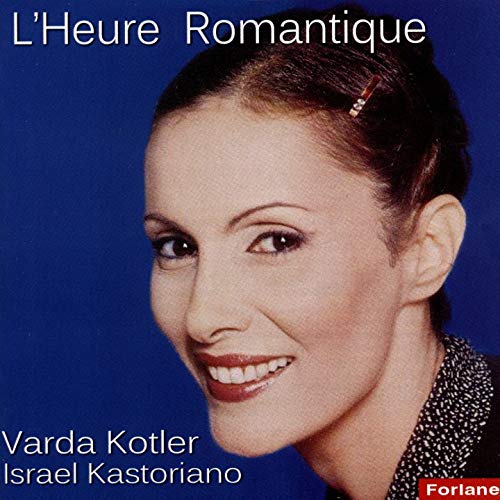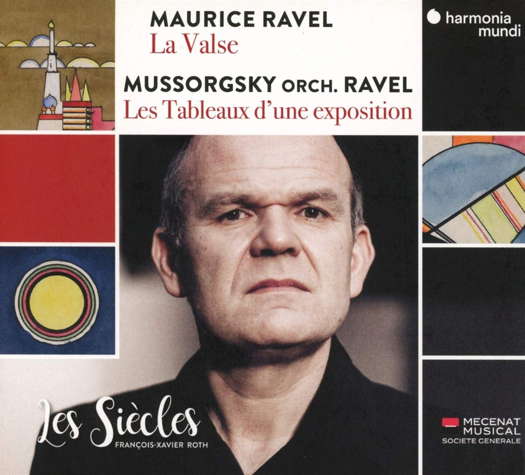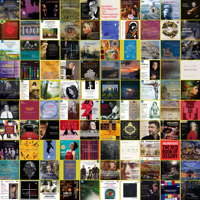 SPONSORED: CD Spotlight. Well Realized - Varda Kotler and Israel Kastoriano - recommended by Geoff Pearce.
SPONSORED: CD Spotlight. Well Realized - Varda Kotler and Israel Kastoriano - recommended by Geoff Pearce.
All sponsored features >>

Special in Many Ways
GERALD FENECH listens to Musorgsky and Ravel,
conducted by François-Xavier Roth
'Truly hair-raising stuff, wonderfully annotated and recorded.'
In Ravel's words: 'Some people have seen in my work La Valse the expression of a tragic event, some have said it represented the end of the Second Empire, and others have said it was post-war Vienna. Certainly, La Valse is tragic, but in the Greek sense: it is the fatal whirling, the expression of the dizziness and voluptuousness of the dance, pushed to its paroxysm.'
Initially, Ravel was contemplating a homage to Johann Strauss but, as the idea grew, it came to reflect the scars of the Great War. Completed in April 1920, this brilliant orchestral piece opens with an allusion to the Viennese waltz, but as it progresses, the music becomes more frenetic, evoking the ruins of the catastrophe of the conflict and the emptiness of that dark period of European history. At the end it almost transforms itself into a 'danse macabre' which some have interpreted as the destruction of the waltz.
Listen — Ravel: La Valse
(track 16, 11:20-12:13) © 2020 harmonia mundi musique sas :
There are other descriptions one can deduce, all depending on one's own experience, but for me (and this is just my view) La Valse is a warning not to dive headlong into an uncontrolled lifestyle of pleasure and revelry, hoping things will remain the same and then, when disaster strikes, you find yourself carried away in its wake. Whatever the case, La Valse remains a spectacular orchestral showpiece that has entranced audiences for the past century; so, Happy Birthday to Ravel's fantastic creation.
Pictures at an Exhibition is an altogether different proposition. By the time Koussevitsky suggested to Ravel to orchestrate Mussorgsky's piano masterpiece, the composer was already very familiar with Russian music; indeed, many Russian artists and composers had performed in Paris way back since 1889. This leads one to believe that Ravel must have heard Pictures at an Exhibition in both its piano version and Tushmalov's orchestral version of 1891 before accepting Koussevitsky's offer.
Listen — Mussorgsky/Ravel: Bydlo - Promenade (Pictures at an Exhibition)
(track 7, 2:24-track 8, 0:17) © 2020 harmonia mundi musique sas :
This version by François-Xavier Roth is special in many ways, particularly for the fact that it is a new 2019 revised edition compiled from the original 1922 orchestral score, Mussorgsky's manuscript of 1874, Koussevitsky's first conducting scores (which were subjected to a number of alterations by the famous conductor), the printed score of 1929 and the various piano editions by Rimsky-Korsakov that were available in the 1920s.
Listen — Mussorgsky/Ravel: Il vecchio castello (Pictures at an Exhibition)
(track 4, 3:25-4:19) © 2020 harmonia mundi musique sas :
Quite a mix indeed, but the finished product is absolutely staggering, and the music-making has such an overwhelming power that one is left gasping for breath no sooner one passes through 'The Great Gate of Kiev'.
Listen — Mussorgsky/Ravel: The great gate of Kiev (Pictures at an Exhibition)
(track 15, 4:05-5:05) © 2020 harmonia mundi musique sas :
No wonder Toscanini regarded this masterpiece as a genuine treatise on instrumentation, on a par with Berlioz. Truly hair-raising stuff, wonderfully annotated and recorded.
Copyright © 25 May 2020
Gerald Fenech,
Gzira, Malta

CD INFORMATION - RAVEL-MUSSORGSKY: LES SIÈCLES / ROTH
FURTHER INFORMATION: MODEST MUSORGSKY
FURTHER INFORMATION: MAURICE RAVEL
FURTHER INFORMATION: HARMONIA MUNDI



